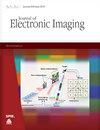USDAP: universal source-free domain adaptation based on prompt learning
IF 1
4区 计算机科学
Q4 ENGINEERING, ELECTRICAL & ELECTRONIC
引用次数: 0
Abstract
Universal source-free domain adaptation (USFDA) aims to explore transferring domain-consistent knowledge in the presence of domain shift and category shift, without access to a source domain. Existing works mainly rely on prior domain-invariant knowledge provided by the source model, ignoring the significant discrepancy between the source and target domains. However, directly utilizing the source model will generate noisy pseudo-labels on the target domain, resulting in erroneous decision boundaries. To alleviate the aforementioned issue, we propose a two-stage USFDA approach based on prompt learning, named USDAP. Primarily, to reduce domain differences, during the prompt learning stage, we introduce a learnable prompt designed to align the target domain distribution with the source. Furthermore, for more discriminative decision boundaries, in the feature alignment stage, we propose an adaptive global-local clustering strategy. This strategy utilizes one-versus-all clustering globally to separate different categories and neighbor-to-neighbor clustering locally to prevent incorrect pseudo-label assignments at cluster boundaries. Based on the above two-stage method, target data are adapted to the classification network under the prompt’s guidance, forming more compact category clusters, thus achieving excellent migration performance for the model. We conduct experiments on various datasets with diverse category shift scenarios to illustrate the superiority of our USDAP.USDAP:基于即时学习的通用无源域适应
通用无源域适应(USFDA)旨在探索在不访问源域的情况下,在存在域转移和类别转移的情况下转移与域一致的知识。现有研究主要依赖源模型提供的先验领域不变知识,忽略了源领域和目标领域之间的显著差异。然而,直接利用源模型会在目标域上生成噪声伪标签,从而导致错误的决策边界。为了缓解上述问题,我们提出了一种基于即时学习的两阶段 USFDA 方法,命名为 USDAP。首先,为了减少域差异,在提示学习阶段,我们引入了可学习的提示,旨在使目标域分布与源分布保持一致。此外,为了提高决策边界的区分度,在特征对齐阶段,我们提出了一种自适应全局-局部聚类策略。该策略在全局范围内利用 "一对全 "聚类来区分不同类别,在局部范围内利用 "邻居对邻居 "聚类来防止在聚类边界出现错误的伪标签分配。基于上述两阶段方法,目标数据在提示的引导下适应分类网络,形成更紧凑的类别聚类,从而为模型实现出色的迁移性能。我们在各种数据集上进行了不同类别迁移场景的实验,以说明我们的 USDAP 的优越性。
本文章由计算机程序翻译,如有差异,请以英文原文为准。
求助全文
约1分钟内获得全文
求助全文
来源期刊

Journal of Electronic Imaging
工程技术-成像科学与照相技术
CiteScore
1.70
自引率
27.30%
发文量
341
审稿时长
4.0 months
期刊介绍:
The Journal of Electronic Imaging publishes peer-reviewed papers in all technology areas that make up the field of electronic imaging and are normally considered in the design, engineering, and applications of electronic imaging systems.
 求助内容:
求助内容: 应助结果提醒方式:
应助结果提醒方式:


